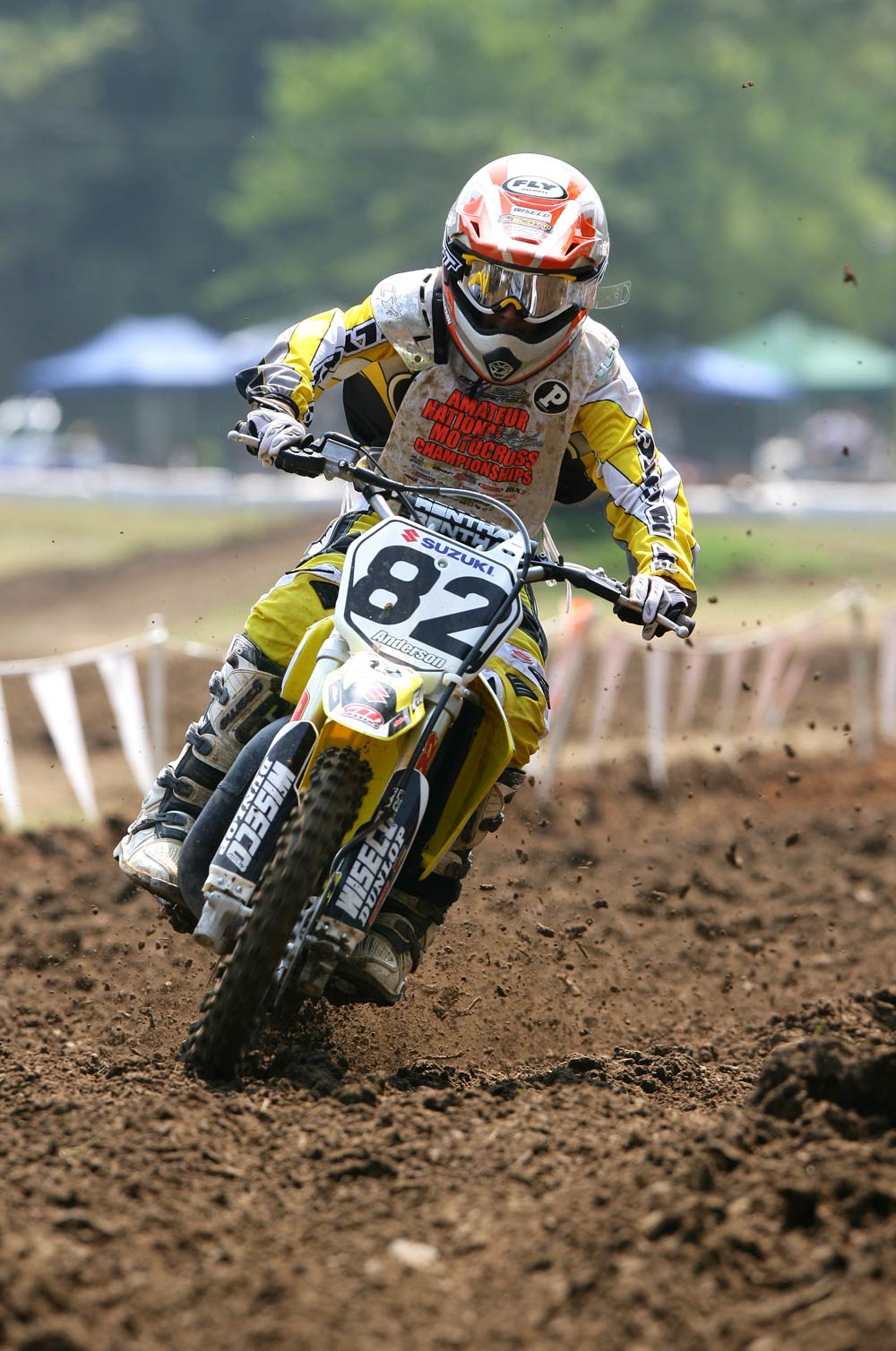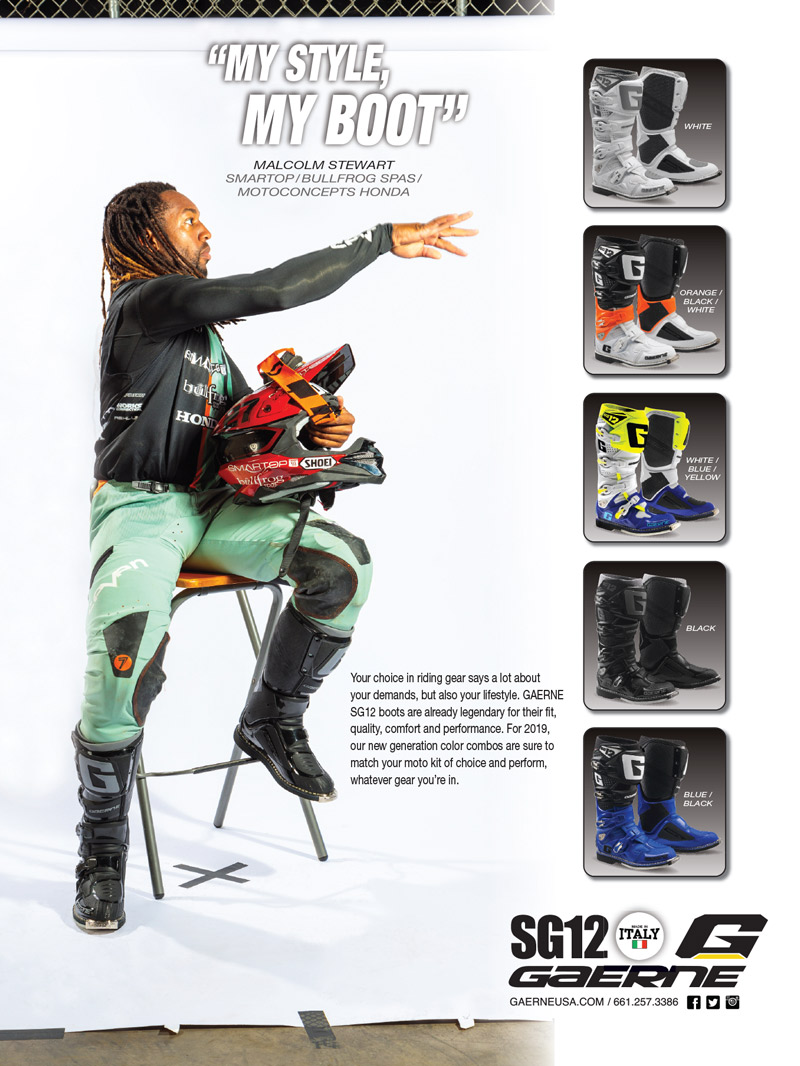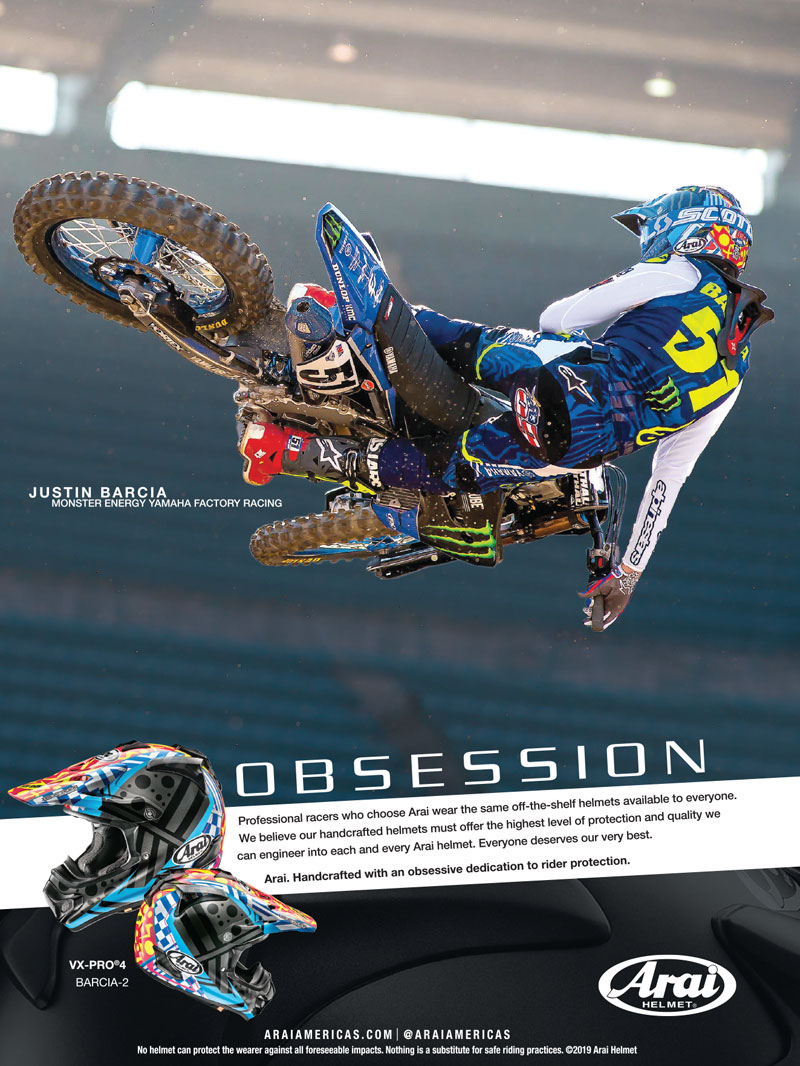

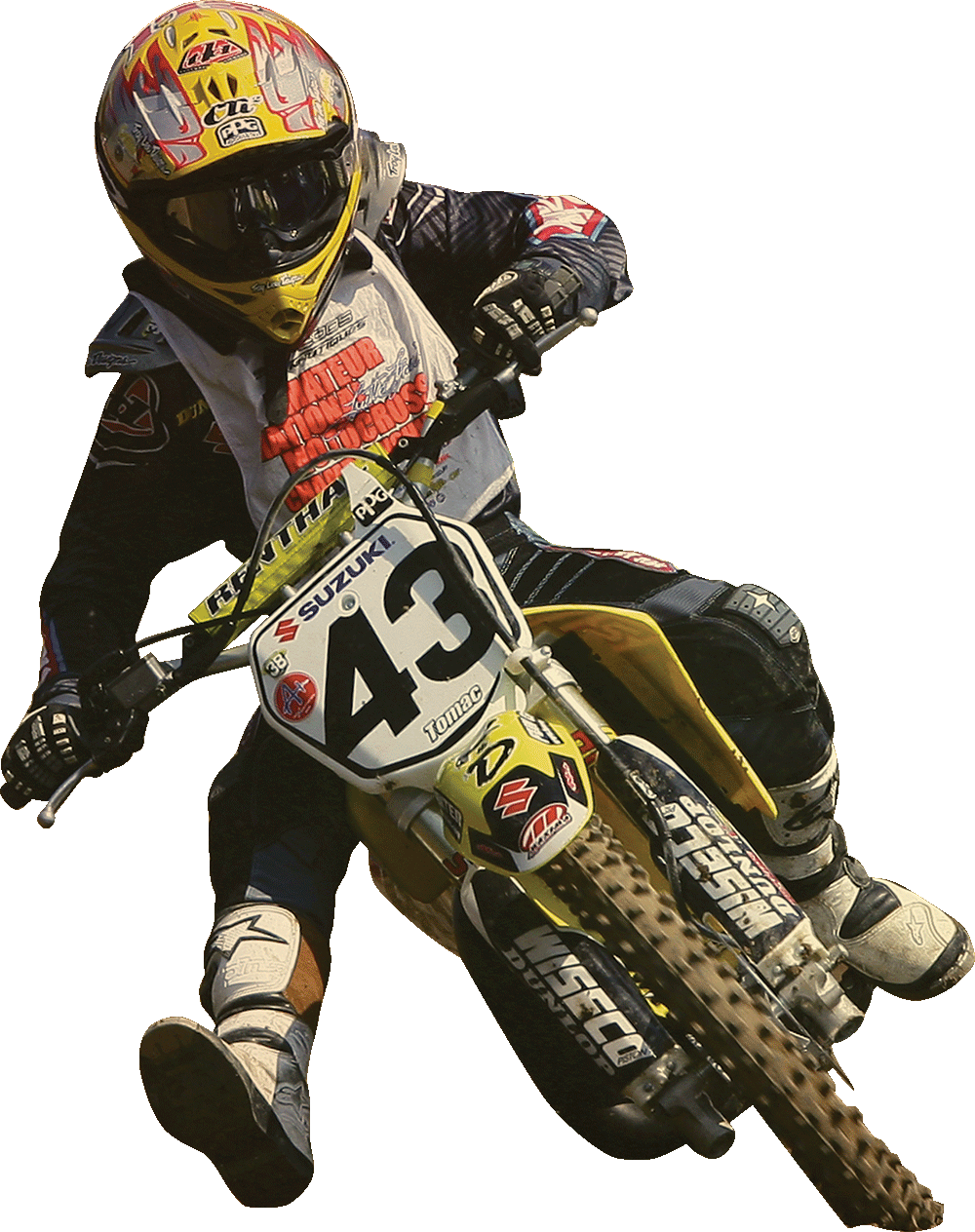
PHOTOS: RACER X ARCHIVES





PHOTOS: RACER X ARCHIVES



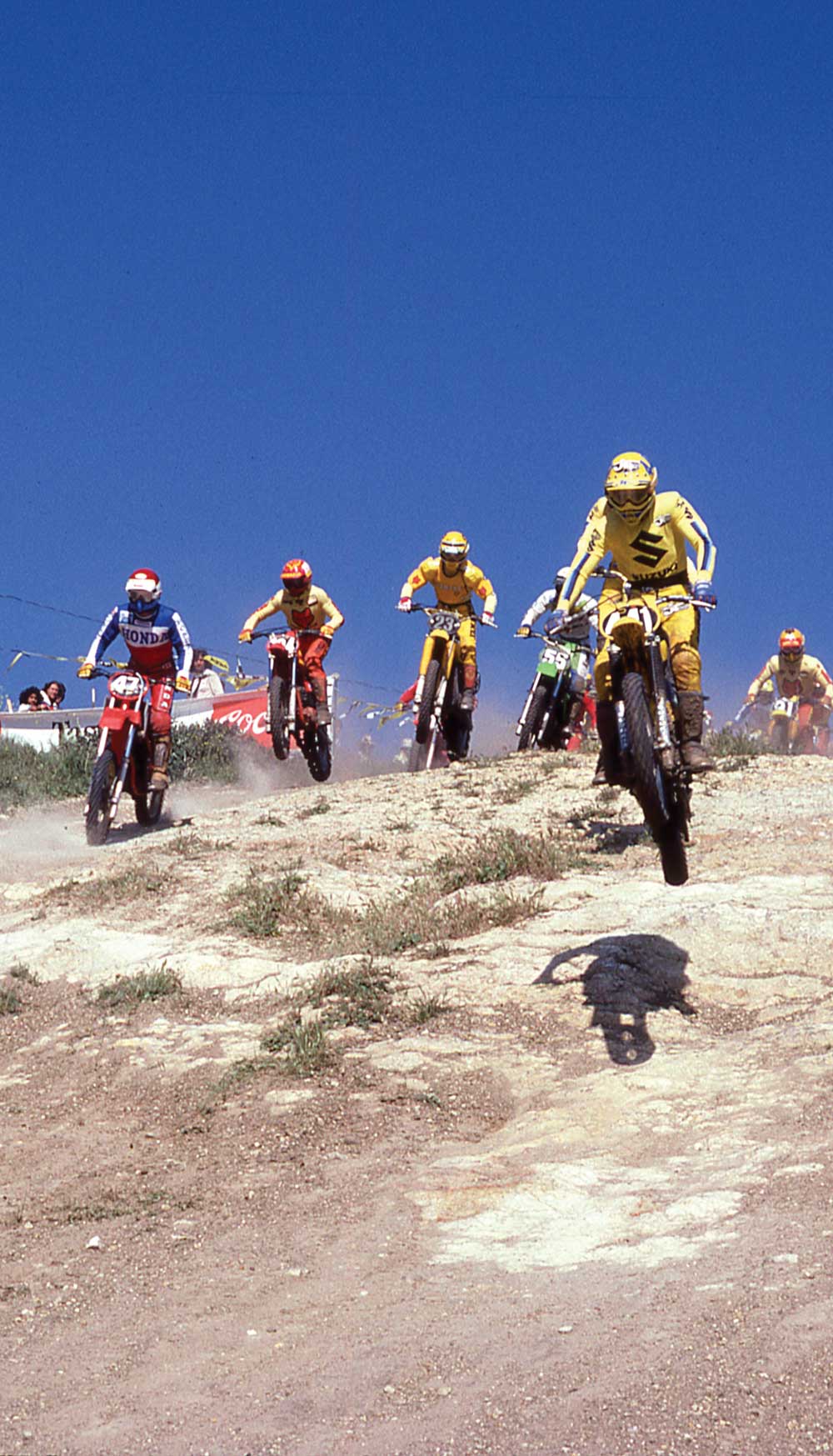
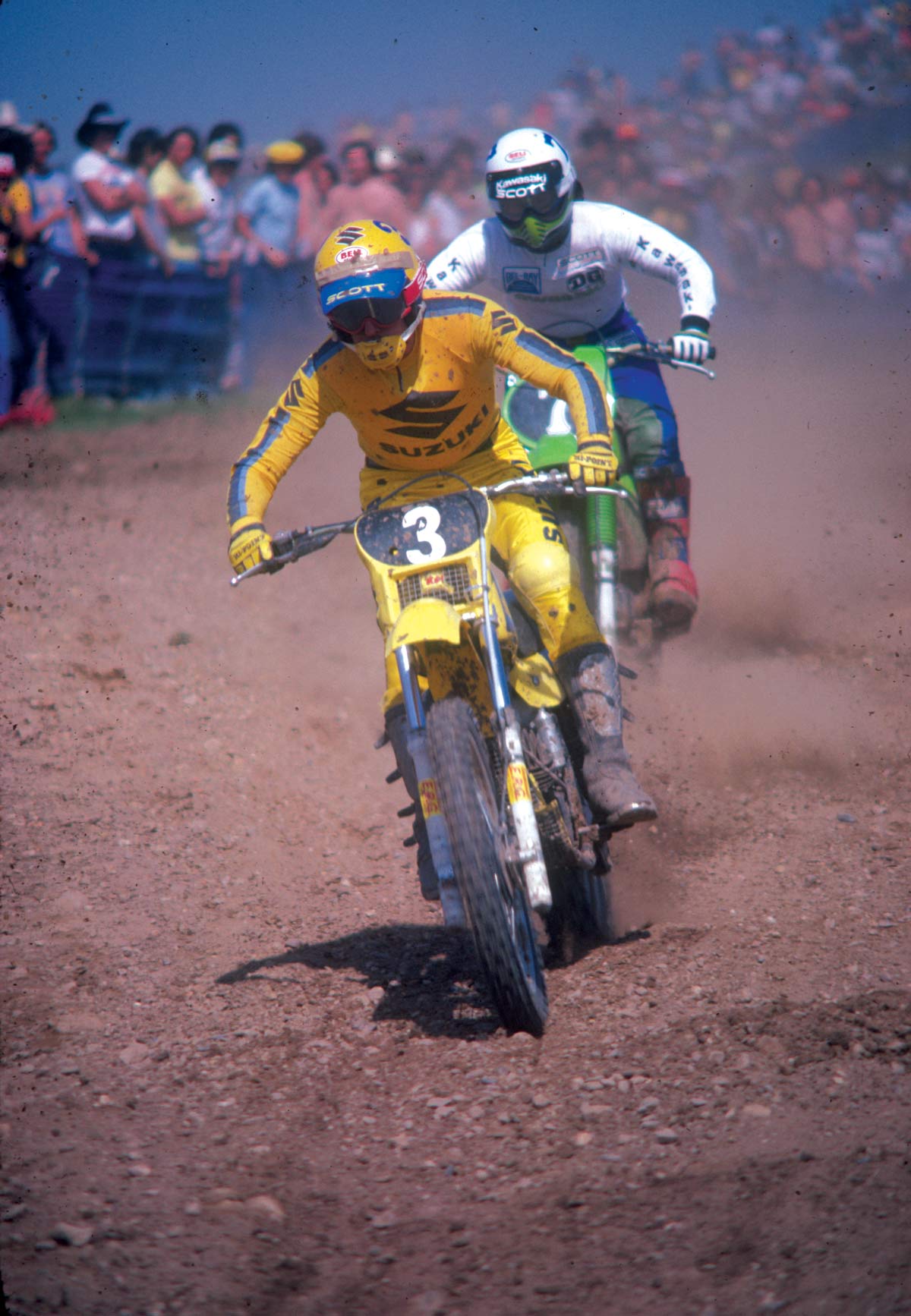

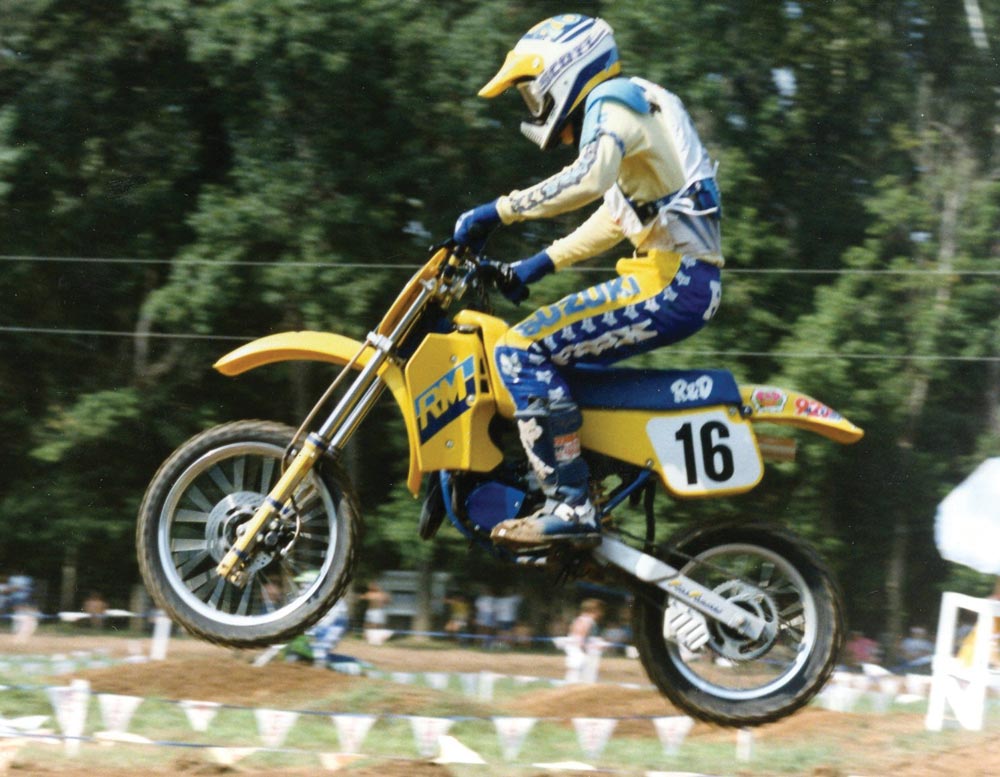
 ith a nod to minicycle pioneers Jeff Ward and his Honda XR75, Noguchi Yamaha’s Gene McKay, Indian rider “Flyin’” Mike Brown, and the rest of those early-seventies playground legends, this story really begins in 1977. That’s when Suzuki decided to get serious about minicycle racing with the release of its radically new RM80, which replaced the woeful TM75—said to be so bad that even Suzuki’s professional mechanics used Honda XR75s as pit bikes rather than be seen on one. Suzuki got the message all the way over in Japan, and they responded with a new offering for ’77, the first RM80 two-stroke. The bike was built to go up against the Yamaha YZ80s that SoCal hotshoe Brian Myerscough was cleaning up on. First, they had to find some racers.
ith a nod to minicycle pioneers Jeff Ward and his Honda XR75, Noguchi Yamaha’s Gene McKay, Indian rider “Flyin’” Mike Brown, and the rest of those early-seventies playground legends, this story really begins in 1977. That’s when Suzuki decided to get serious about minicycle racing with the release of its radically new RM80, which replaced the woeful TM75—said to be so bad that even Suzuki’s professional mechanics used Honda XR75s as pit bikes rather than be seen on one. Suzuki got the message all the way over in Japan, and they responded with a new offering for ’77, the first RM80 two-stroke. The bike was built to go up against the Yamaha YZ80s that SoCal hotshoe Brian Myerscough was cleaning up on. First, they had to find some racers.
Unlike more recent history, back in the day, manufacturers did not give free bikes to the faster kids, nor provide trackside support, and there were certainly no professional teams offering development deals with salaries, multi-year contracts, and a promised factory spot someday. You’d be considered lucky if you received a free set of handlebars and grips to go on your bike. That all changed when American Suzuki hired Rudy Dickinson of R&D Racing and his son Dean to put together the first factory-supported amateur racing program.
“One day we were at Indian Dunes, and Suzuki had showed up out there with a couple of young riders that had been developing the pre-production RM80,” recalls Dean Dickinson, whose family’s hop-up shop was in Norwalk. “The Yamahas we had at the time [were] running really well, and that drew the attention of the guys from Suzuki. They followed us back to the truck and exchanged business cards. So later we get a phone call from American Suzuki. They asked us if we could bring our riders and our bikes out to Saddleback—they wanted to do some bike comparisons and let our riders try their bike as well.”
“Back at that time, any kind of free motorcycles or parts was completely unheard of,” he explains, “so when they offered us a couple of free bikes and all the parts for a season, it was like, ‘Wow, does it get any better than this?’ We had never heard of such a thing. So that’s how we started.” Dickinson adds that Suzuki apparently did the same deal with FMF and DG Racing: “They just turned everyone loose to see where we would go with their new bikes.”
At the time, there was a vacuum forming at the top of the mini ranks, as many of the sport’s first real standouts—the aforementioned Ward and Myerscough, in particular—were growing up and getting on 125s. Also, Kawasaki, KTM, and Husqvarna had yet to start making competitive minicycles. Dickinson found his rider in San Diego.
“We got with a kid named Scott Burnworth, who would turn out to be a neighbor and big rival of Ricky Johnson,” Dickinson recalls. “He was the first guy that we actually had real success with. When we went to Ponca City that first year together, he won all three classes, all the motos. He pretty much put us on the map.”
For the next dozen or so years, even as Kawasaki’s Team Green was moving into the game and changing it, tiny R&D Racing Suzuki developed some amazing talent. They even got to work with Myerscough in his formative years as a Suzuki factory rider and 125 national winner. [Ed. note: Co-authors Blake Wharton and DC both spent time as kids riding for Suzuki’s amateur support program.]
“Our job was to basically take these kids to the pros,” Dickinson says. “It was multifaceted in that sense, because we weren’t just focusing on the small bikes—we were the farm team for the next 125 guy. After Myerscough and Burnworth it was George Holland, then Buddy Antunez, then Jeff Dement.”


 ith a nod to minicycle pioneers Jeff Ward and his Honda XR75, Noguchi Yamaha’s Gene McKay, Indian rider “Flyin’” Mike Brown, and the rest of those early-seventies playground legends, this story really begins in 1977. That’s when Suzuki decided to get serious about minicycle racing with the release of its radically new RM80, which replaced the woeful TM75—said to be so bad that even Suzuki’s professional mechanics used Honda XR75s as pit bikes rather than be seen on one. Suzuki got the message all the way over in Japan, and they responded with a new offering for ’77, the first RM80 two-stroke. The bike was built to go up against the Yamaha YZ80s that SoCal hotshoe Brian Myerscough was cleaning up on. First, they had to find some racers.
ith a nod to minicycle pioneers Jeff Ward and his Honda XR75, Noguchi Yamaha’s Gene McKay, Indian rider “Flyin’” Mike Brown, and the rest of those early-seventies playground legends, this story really begins in 1977. That’s when Suzuki decided to get serious about minicycle racing with the release of its radically new RM80, which replaced the woeful TM75—said to be so bad that even Suzuki’s professional mechanics used Honda XR75s as pit bikes rather than be seen on one. Suzuki got the message all the way over in Japan, and they responded with a new offering for ’77, the first RM80 two-stroke. The bike was built to go up against the Yamaha YZ80s that SoCal hotshoe Brian Myerscough was cleaning up on. First, they had to find some racers.
Unlike more recent history, back in the day, manufacturers did not give free bikes to the faster kids, nor provide trackside support, and there were certainly no professional teams offering development deals with salaries, multi-year contracts, and a promised factory spot someday. You’d be considered lucky if you received a free set of handlebars and grips to go on your bike. That all changed when American Suzuki hired Rudy Dickinson of R&D Racing and his son Dean to put together the first factory-supported amateur racing program.
“One day we were at Indian Dunes, and Suzuki had showed up out there with a couple of young riders that had been developing the pre-production RM80,” recalls Dean Dickinson, whose family’s hop-up shop was in Norwalk. “The Yamahas we had at the time [were] running really well, and that drew the attention of the guys from Suzuki. They followed us back to the truck and exchanged business cards. So later we get a phone call from American Suzuki. They asked us if we could bring our riders and our bikes out to Saddleback—they wanted to do some bike comparisons and let our riders try their bike as well.”
“Back at that time, any kind of free motorcycles or parts was completely unheard of,” he explains, “so when they offered us a couple of free bikes and all the parts for a season, it was like, ‘Wow, does it get any better than this?’ We had never heard of such a thing. So that’s how we started.” Dickinson adds that Suzuki apparently did the same deal with FMF and DG Racing: “They just turned everyone loose to see where we would go with their new bikes.”
At the time, there was a vacuum forming at the top of the mini ranks, as many of the sport’s first real standouts—the aforementioned Ward and Myerscough, in particular—were growing up and getting on 125s. Also, Kawasaki, KTM, and Husqvarna had yet to start making competitive minicycles. Dickinson found his rider in San Diego.
“We got with a kid named Scott Burnworth, who would turn out to be a neighbor and big rival of Ricky Johnson,” Dickinson recalls. “He was the first guy that we actually had real success with. When we went to Ponca City that first year together, he won all three classes, all the motos. He pretty much put us on the map.”
For the next dozen or so years, even as Kawasaki’s Team Green was moving into the game and changing it, tiny R&D Racing Suzuki developed some amazing talent. They even got to work with Myerscough in his formative years as a Suzuki factory rider and 125 national winner. [Ed. note: Co-authors Blake Wharton and DC both spent time as kids riding for Suzuki’s amateur support program.]
“Our job was to basically take these kids to the pros,” Dickinson says. “It was multifaceted in that sense, because we weren’t just focusing on the small bikes—we were the farm team for the next 125 guy. After Myerscough and Burnworth it was George Holland, then Buddy Antunez, then Jeff Dement.”


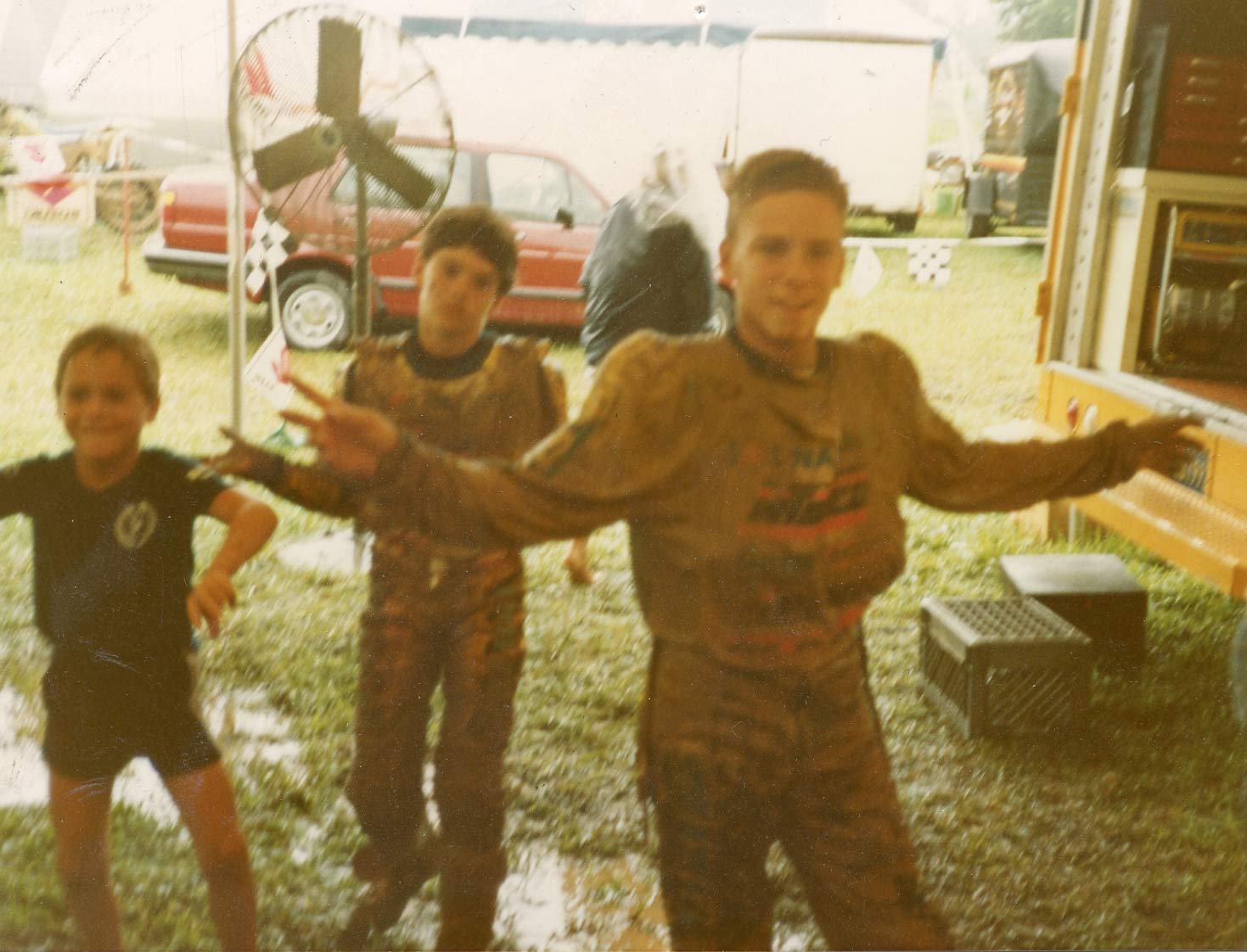
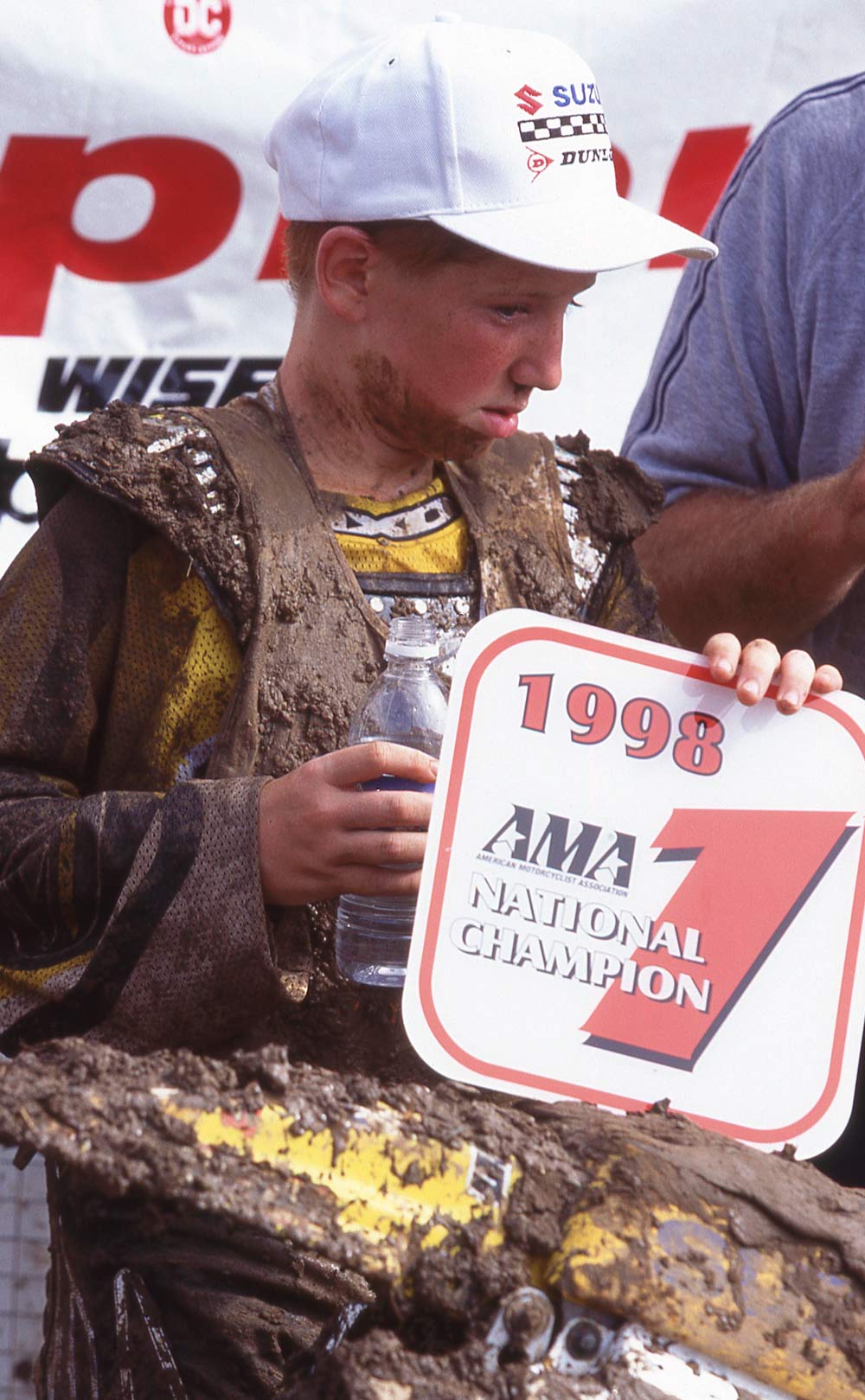
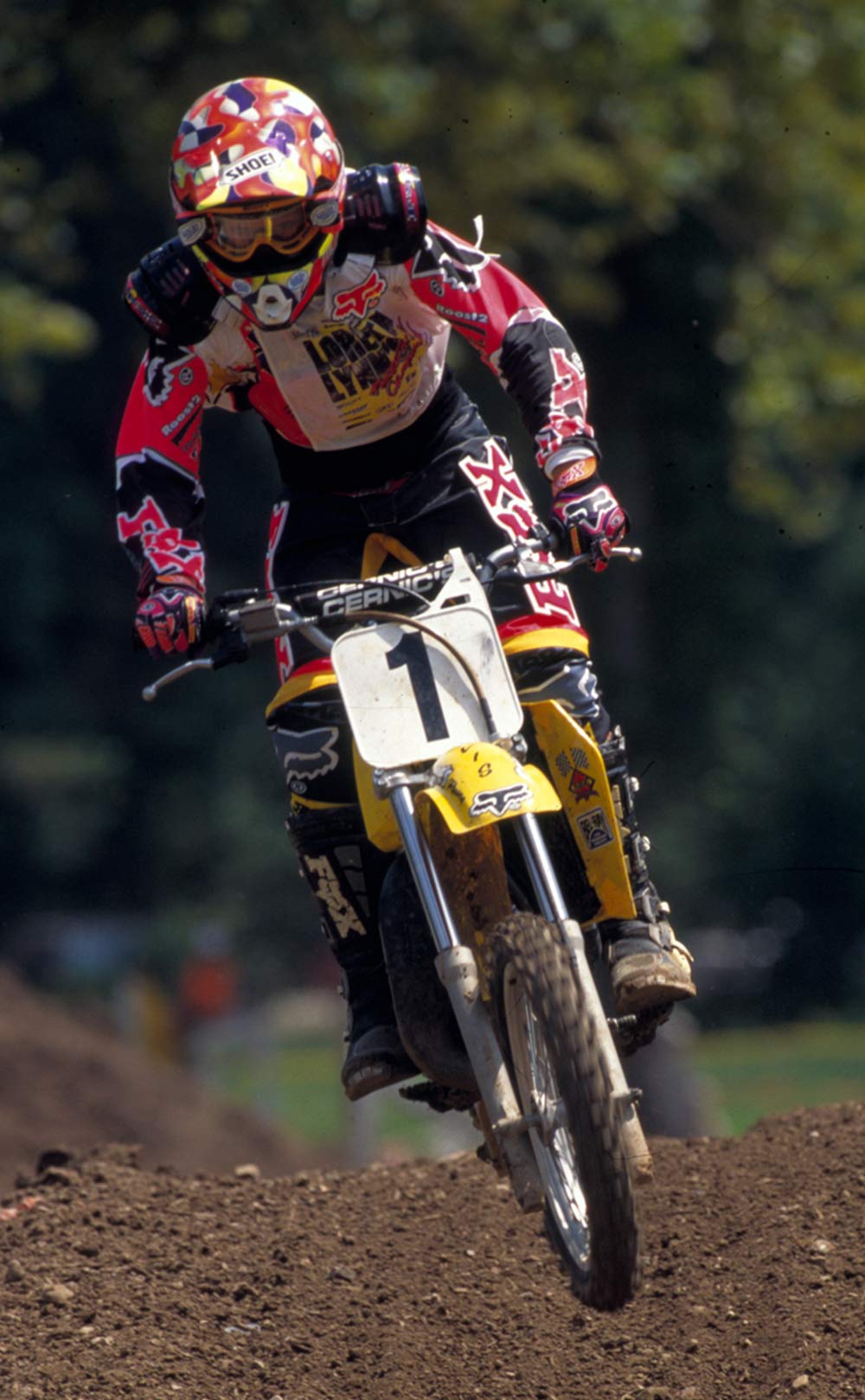


ole Gress may go down in amateur racing lore as one of the most successful team managers of all time, making his mark in one of the most competitive eras in amateur motocross. He was with Suzuki’s amateur program from the early nineties, right after Antunez graduated to the pro team, up through 2009, when the star-crossed Nico Izzi came through the program.
“I started in ’93 with Suzuki running the contingency program and helping Pat Alexander, the racing boss,” Gress says of his introduction to the team. “I knew the program was so heralded in the late eighties. When it was just R&D Racing, it was a powerhouse. It evolved the RM80 to a really, really good motorcycle. And then it kind of fed up the line—they had a strong team up into the early nineties, even with 125s. It was a good deal. That feeder system they had was unbelievable.”
Suzuki’s amateur support stable included Georgia’s Ezra Lusk, Ohio’s Greg Rand, Arizona’s David Pingree, and a fast kid from Texas named Charley Bogard who used to bang bars with Team Green’s rising star Ricky Carmichael. But the relationship with R&D Racing was changing, and Suzuki decided to bring the program in-house. The timing was great for them—they were about to go on an epic run of finding and signing young talent, despite lacking the budget and resources of their rivals at the other Japanese brands. Among the names Gress and Alexander recruited to the brand—with ongoing assistance from keen-eyed Jeff Cernic of the Pennsylvania-based Cernic’s Racing—were Maryland’s Travis Pastrana, Florida’s Davi Millsaps, and Pennsylvanians Branden Jesseman and Broc Hepler, all of whom would graduate from the amateur ranks with Suzuki and win for them at the professional level. Pastrana would win two titles in his very short racing career; Jesseman would win one. (There were some missteps, too, including the superbly talented but undisciplined Ben Riddle of Kentucky, the injury-riddled Gene Stull of Pennsylvania, and Shane Bess of California.)

“It was really Millsaps and Hepler that put the legacy behind that era and were the ones that attracted the bulk of the sponsors and younger athletes over to the program,” he recalls. “In addition to hiring some of the top riders, we helped start the MTF [Millsaps Training Facility]. It was the first real training facility that got rolling and is now the standard of amateur racing today. Davi’s contract was, like, me paying his tractor bill. That’s how they got it going!”
uzuki’s introduction of amateur factory support in the seventies was revolutionary, but around this point, 30 years later, the industry would evolve yet again. After GEICO Honda’s unprecedented success with Trey Canard, whom they signed to a pro contract in 2006 with one full amateur year to go, they sent him right up to the professional team after Loretta Lynn’s.
“That’s when the industry began to change its approach when dealing with upcoming talent,” Gress explains, “shifting from the older notion that kids needed to prove themselves their final year as an A rider to a more modern, long-term development program, signing young riders years before turning pro.” This would pay large dividends for teams and OEMs that caught onto the new trend, and has become the blueprint for success in the moto industry today.
Suzuki’s then-professional team manager tried to counter the GEICO Honda move by signing schoolboy rider Ryan Dungey to a factory deal while he was still in the B class. It worked out better than anyone except Roger DeCoster might have ever expected, but Suzuki as a brand lacked the infrastructure to do that with many more kids—they did not have a GEICO Honda or Pro Circuit Kawasaki or Yamaha of Troy as the carrot at the end of the stick, just the full factory team.


“It was really Millsaps and Hepler that put the legacy behind that era and were the ones that attracted the bulk of the sponsors and younger athletes over to the program,” he recalls. “In addition to hiring some of the top riders, we helped start the MTF [Millsaps Training Facility]. It was the first real training facility that got rolling and is now the standard of amateur racing today. Davi’s contract was, like, me paying his tractor bill. That’s how they got it going!”
uzuki’s introduction of amateur factory support in the seventies was revolutionary, but around this point, 30 years later, the industry would evolve yet again. After GEICO Honda’s unprecedented success with Trey Canard, whom they signed to a pro contract in 2006 with one full amateur year to go, they sent him right up to the professional team after Loretta Lynn’s.
“That’s when the industry began to change its approach when dealing with upcoming talent,” Gress explains, “shifting from the older notion that kids needed to prove themselves their final year as an A rider to a more modern, long-term development program, signing young riders years before turning pro.” This would pay large dividends for teams and OEMs that caught onto the new trend, and has become the blueprint for success in the moto industry today.
Suzuki’s then-professional team manager tried to counter the GEICO Honda move by signing schoolboy rider Ryan Dungey to a factory deal while he was still in the B class. It worked out better than anyone except Roger DeCoster might have ever expected, but Suzuki as a brand lacked the infrastructure to do that with many more kids—they did not have a GEICO Honda or Pro Circuit Kawasaki or Yamaha of Troy as the carrot at the end of the stick, just the full factory team.

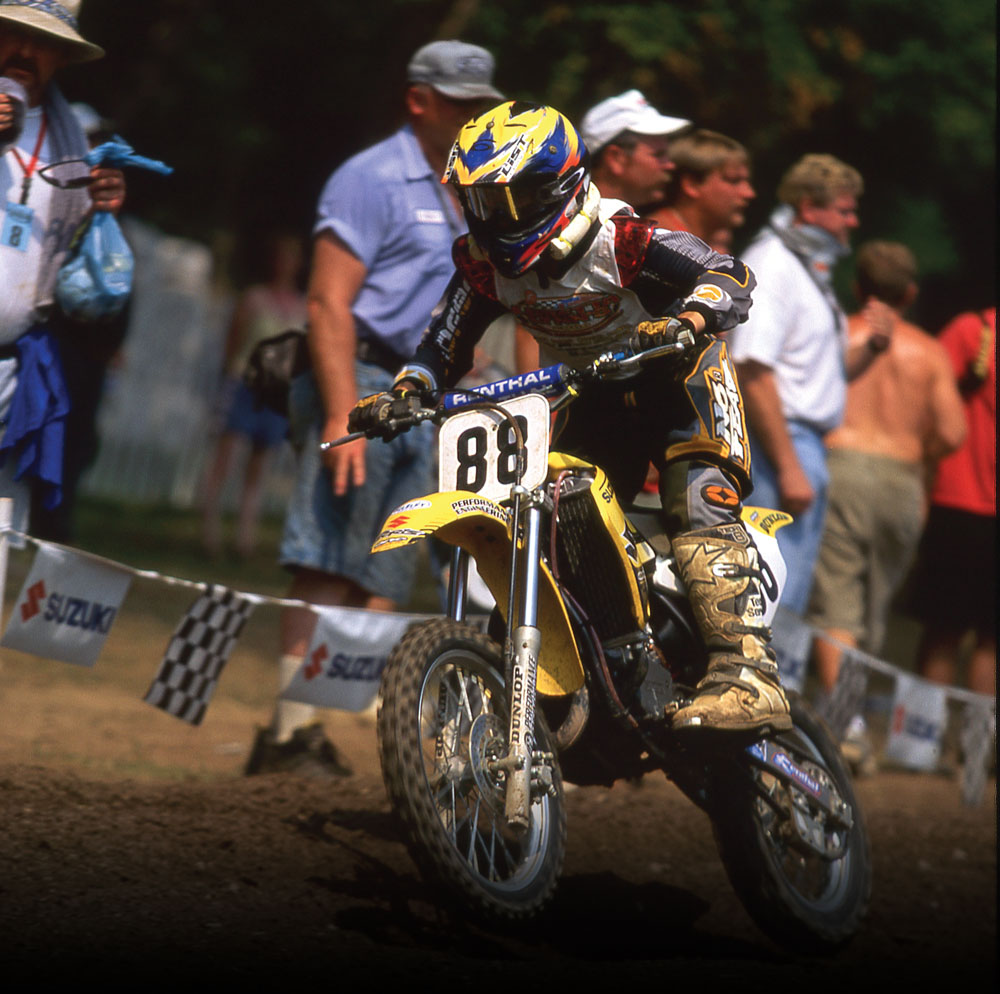

“It was really Millsaps and Hepler that put the legacy behind that era and were the ones that attracted the bulk of the sponsors and younger athletes over to the program,” he recalls. “In addition to hiring some of the top riders, we helped start the MTF [Millsaps Training Facility]. It was the first real training facility that got rolling and is now the standard of amateur racing today. Davi’s contract was, like, me paying his tractor bill. That’s how they got it going!”
uzuki’s introduction of amateur factory support in the seventies was revolutionary, but around this point, 30 years later, the industry would evolve yet again. After GEICO Honda’s unprecedented success with Trey Canard, whom they signed to a pro contract in 2006 with one full amateur year to go, they sent him right up to the professional team after Loretta Lynn’s.
“That’s when the industry began to change its approach when dealing with upcoming talent,” Gress explains, “shifting from the older notion that kids needed to prove themselves their final year as an A rider to a more modern, long-term development program, signing young riders years before turning pro.” This would pay large dividends for teams and OEMs that caught onto the new trend, and has become the blueprint for success in the moto industry today.
Suzuki’s then-professional team manager tried to counter the GEICO Honda move by signing schoolboy rider Ryan Dungey to a factory deal while he was still in the B class. It worked out better than anyone except Roger DeCoster might have ever expected, but Suzuki as a brand lacked the infrastructure to do that with many more kids—they did not have a GEICO Honda or Pro Circuit Kawasaki or Yamaha of Troy as the carrot at the end of the stick, just the full factory team.


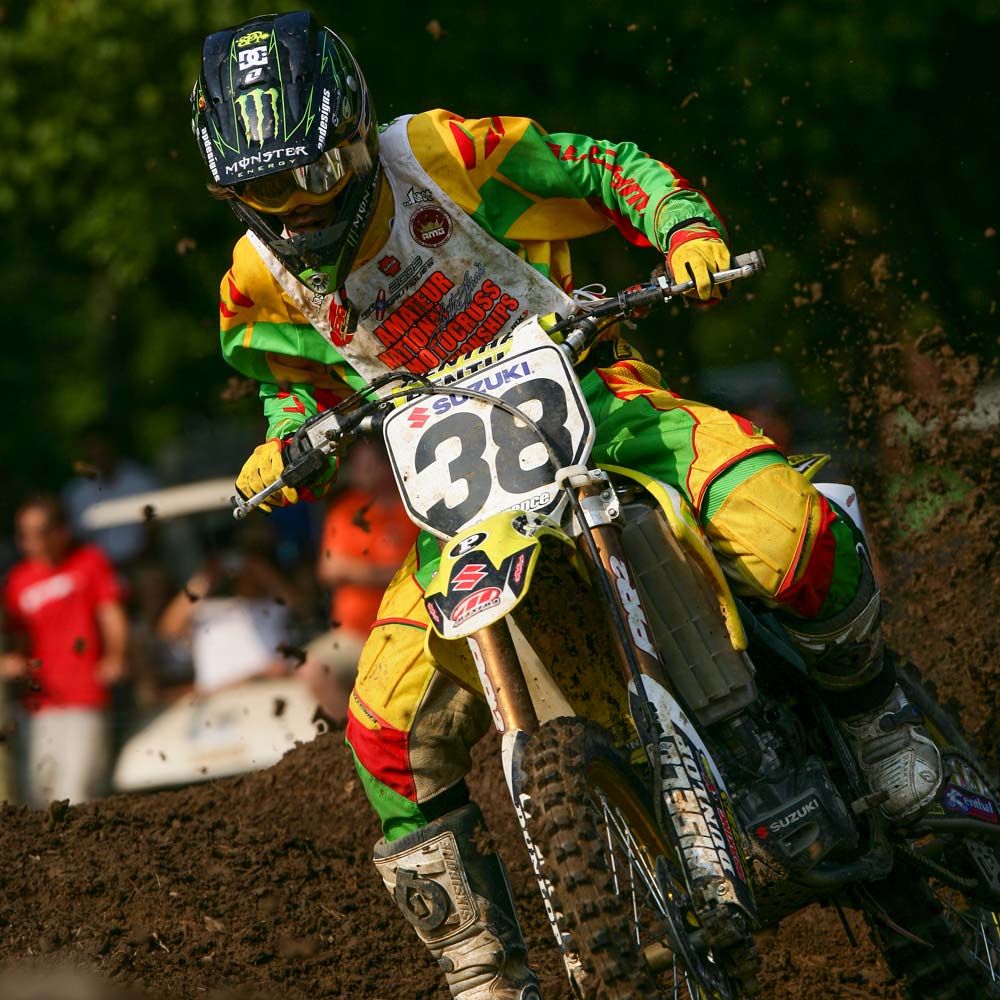
This also coincided with a few big bets that did not pay off, including the notoriously difficult Jason Lawrence of New Jersey, who took up a lot of Suzuki’s time and attention as an amateur but then bolted to Yamaha of Troy before his one good pro season. Sitting in Suzuki’s hands at the same time were a couple of RM80 riders who were on their way up: Colorado’s Eli Tomac and New Mexico’s Jason Anderson finished 1-2 in the 85cc Mod (12-13) class at Loretta Lynn’s ’06, the same year J-Law turned pro. Two years later, Tomac would join GEICO Honda, while Anderson would join Kawasaki’s Team Green.
“That was the big kink in the Suzuki armor and where I would end up losing my top guys to these feeder systems and really high-end factory Lites teams,” Gress says. “That was the new success story, and what I wanted for my guys, too, but right when I was trying to get that going [in ’09] the economy started going in the wrong direction. Suzuki had to start backing out of the amateur support business, and it all ended not long afterwards.”
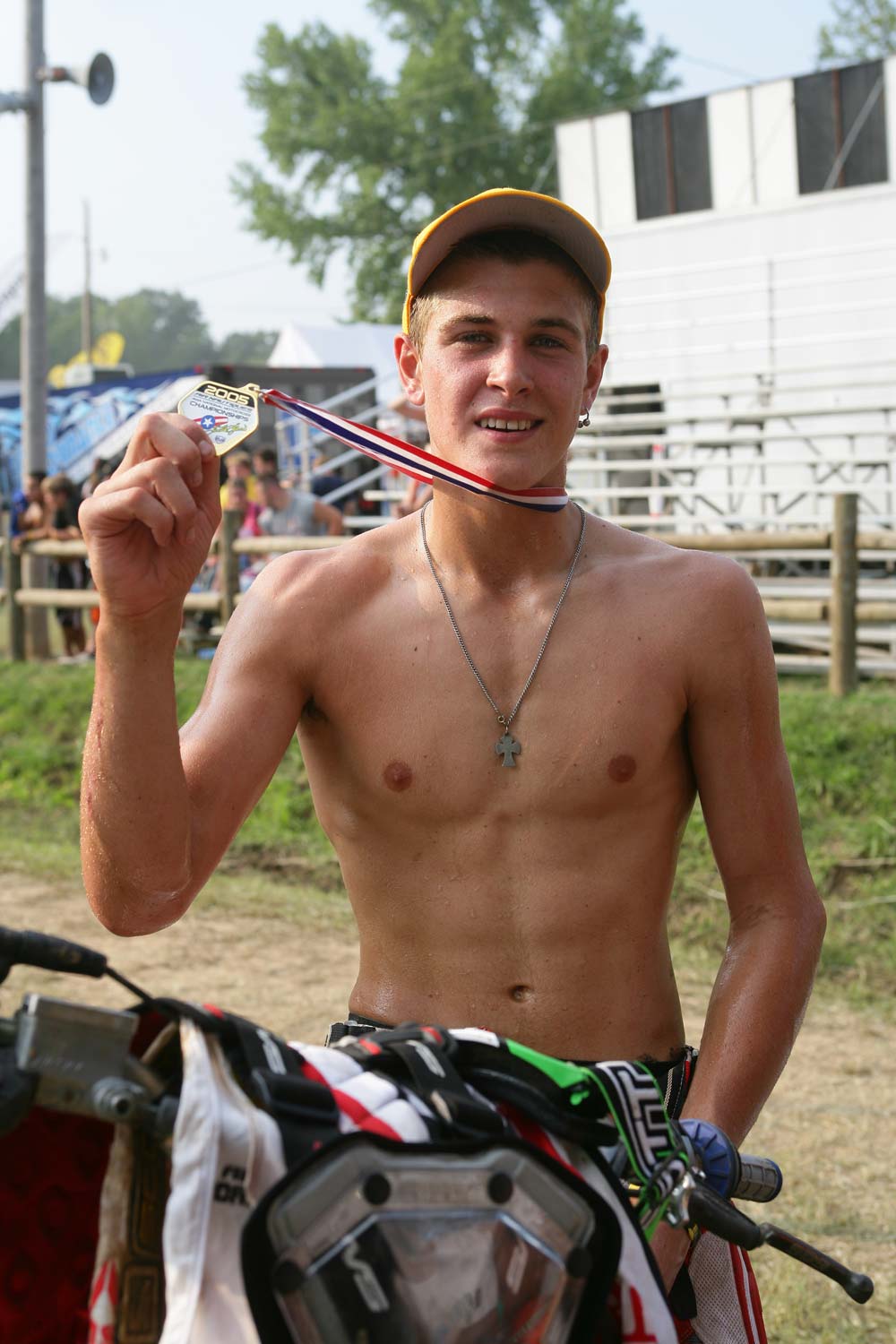

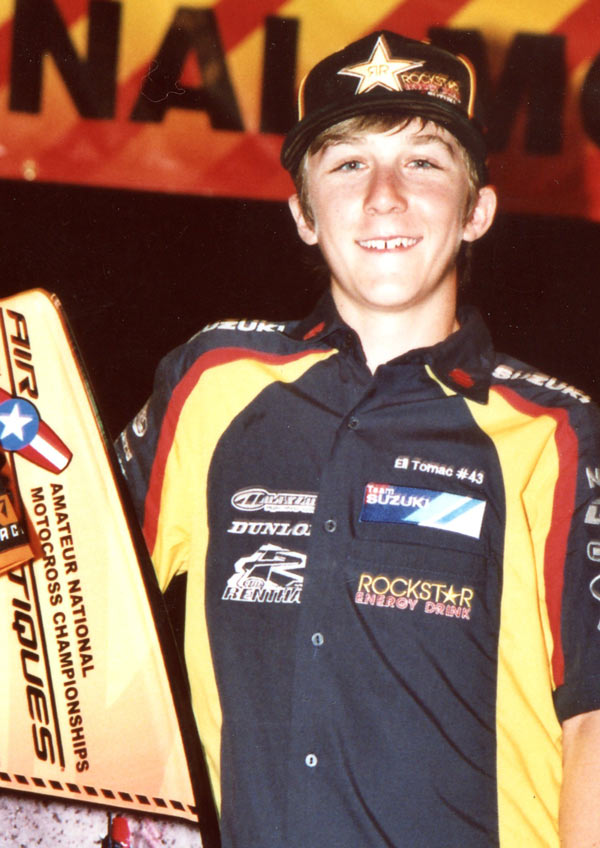

o motocross company was immune to the global economic recession that had taken place by 2009, be they bike shops, tracks, gear companies, or (especially) motorcycle manufacturers. The economy has come back around, but bike sales have yet to return to where they were early in the new millennium. And as one of the smaller OEMs, Suzuki has had a difficult time getting back to where they were as recently as Carmichael’s last great title runs of ’05-’06 and Dungey’s in ’09-’10. But Chris Wheeler, Suzuki’s new amateur support manager, says the brand is not giving up.
“A couple years back, Suzuki moved me over into the race side as the manager for the dirt portion,” says Wheeler, himself a former racer. “They wanted to make a push and bring amateur racing back, so I started putting more focus into just the whole platform of Suzuki racing. That’s when we concepted the ‘RM Army’ initiative, with the goal of giving Suzuki enthusiasts a sense of community. We wanted you to go to the track to race a Suzuki and also root for your fellow Suzuki riders. We went to the Mini Olympics in Florida and started talking to some top amateur kids down there, like Crockett Myers, TJ Rios, and Casey Cochran, and started the program up again. Our goal is to build it up steadily and get back ideally to what it was.
“I was around when it was huge,” Wheeler offers. “I remember back when I was racing, it was essentially Suzuki and Kawasaki who were the two big hitters, but now you’ve got a lot more OEMs participating, which is good for our sport, but it also makes it harder.
“No matter, we’re working to establish ourselves back to where we were. We’re taking one step at a time.” 
